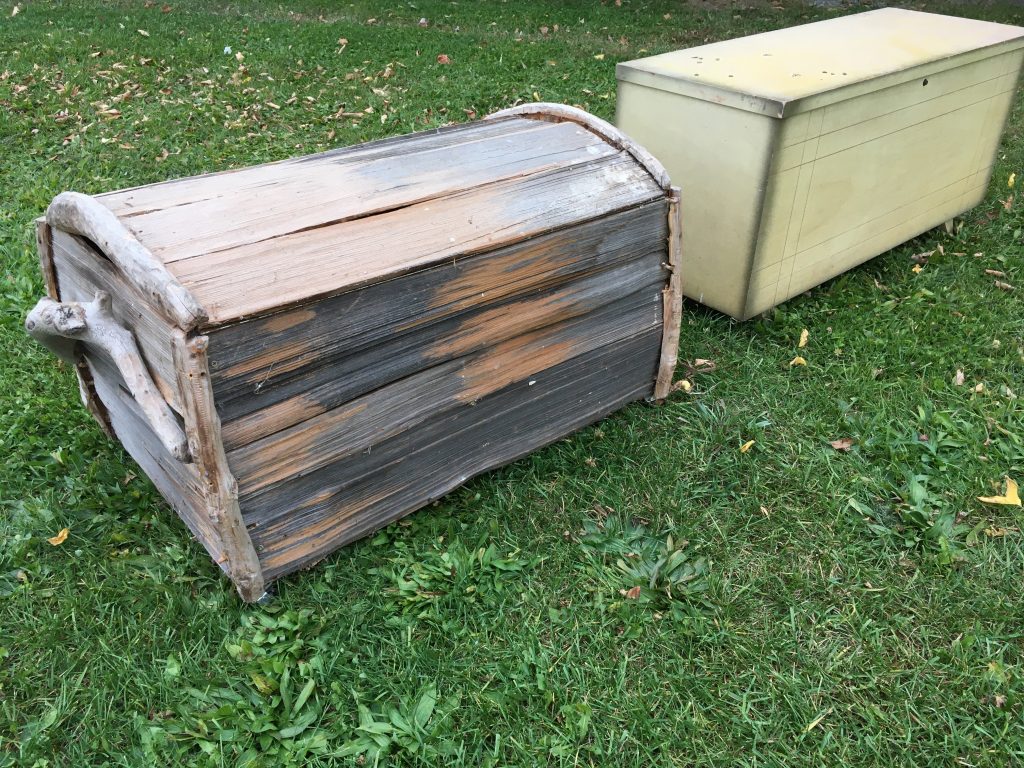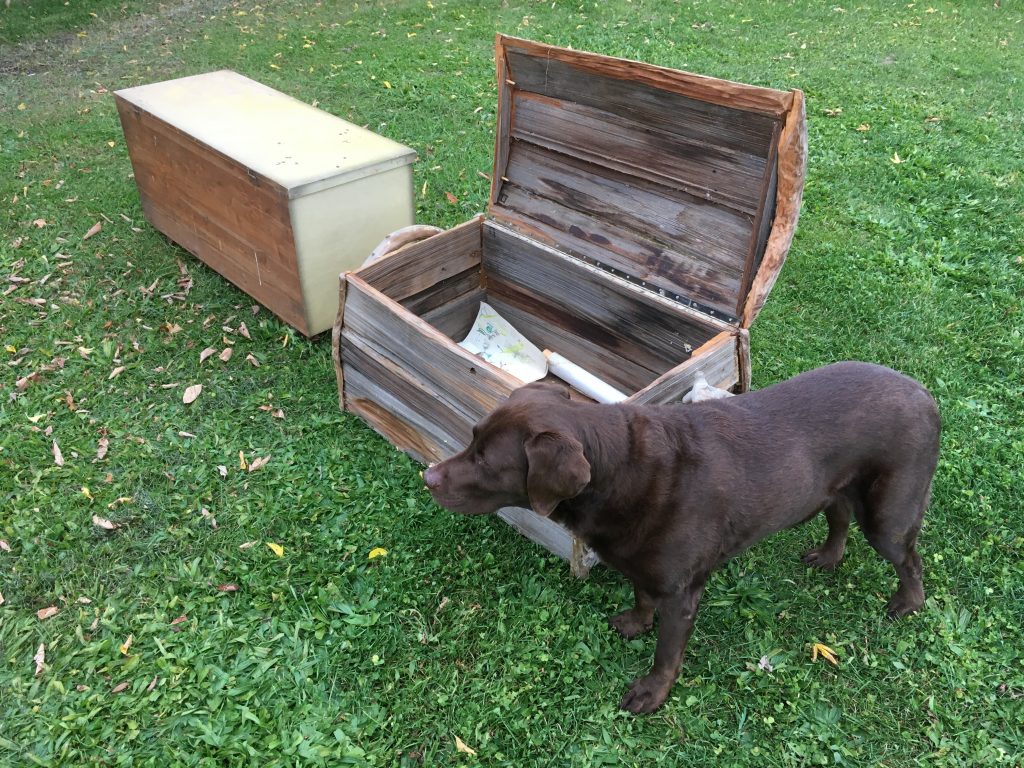
Paul, my father, liked to build furniture from cedar; mostly from Western red cedar driftwood he collected on the beaches of Vancouver Island. He built a chest out of cedar. Like most of the stuff he built, the chest has no right angles. It’s made from hand-hewn slabs of cedar knit together with pegs. A single hinge runs along the entire back of the lid. Twisted driftwood makes up the handles. He put casters under the chest, and used to roll the chest back and forth from under his tall bed, in the strange little shack on a farm in eastern Ontario where he spent his summers in the last decade of his life.
Chests, as an archetype, hold the promise of riches. Pirates bury treasure in chests. A chest, by its very nature, keeps stuff safe. A chest’s owner might lift the chest onto a stagecoach, or a galleon; therefore, the chest must be durable.
My father was in many senses a nomad – often on the road, and owning nothing that anyone would call a house. Yet he built a chest that does not travel well. My father died in the summer of 2018. After my father’s memorial, in October, I put the chest, heavily loaded, in my car, took it to my farm and put it in the barn. The sides came apart a bit during the chest’s travels.
The next spring I opened the chest to have a look. The contents include hundreds of letters, drawings and stories that my father’s 12 children gave him or mailed him over the decades. (These include both editions of The Cucumber – Organic Satisfaction, the underground newspaper that I published, with his encouragement, in high school). Also in the chest: many thick books that Paul made by hand; notebooks in which he wrote to-do lists, phone numbers, and sketches of his designs for vertical-axis wind turbines, tables, chairs and structures. Posters, photographs, and myriad letters written to Paul and from Paul (which their recipients returned to him) make up the other documents.
There’s a problem: mice. The mice in the barn found their way into the chest through the cracks that formed during the chest’s journey. Starting in one corner, they began to shred the mementos to make their nests; a fair number of the letters are now gone.
Around the same time that I acquired my father’s chest, my inlaws drove up from the States to visit, and brought a second cedar chest, of a similar size. This chest, built I would guess in a furniture factory, is a simple, elegant box, locked with a clasp. It differs from my father’s chest in two fundamental ways. (1) It is sturdy and mouse-proof. (2) It is empty.
One could argue that both these details make Chest No. 2 far superior to the one my father built. First, you can put stuff in Chest 2, with confidence that your stuff will be safe. Second, Chest 2 is an inheritance devoid of mildewed memories. It’s light and airy, like an empty house that you can furnish as you see fit.
But alas, I am fated, and freighted, with history and memories and mementos. When I saw Paul before his death, I mentioned my interest in combing through his archives (in a bid to understand this strange man). “My advice is, don’t,” he said. But I often ignore advice; it’s something I learned from him. Perhaps in a final sleight of hand, he built a chest in which his papers would self-destruct.

My solution to the challenge of the cheesy chest has been to transfer the memories from Paul’s faulty receptacle to the other, sealed one. This may be akin to a stubborn owner of shoreline property who builds a breakwall rather than concede that erosion will eventually devour his beach. But while other writers may focus on feelings, I, trained as a journalist, am obsessed with evidence. So for now I preserve my father’s artifacts in a chest where they don’t belong, but from which I can pull them out from time to time, to see whether, in defiance of his counsel, I can fit together these puzzle pieces into something that I can understand.

